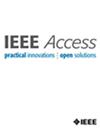永恒物3.0:面向可持续物联网的能量收集系统混合模式SoC
IF 3.6
3区 计算机科学
Q2 COMPUTER SCIENCE, INFORMATION SYSTEMS
引用次数: 0
摘要
物联网中的功率需求对于满足终端节点上耗电传感器的能量需求至关重要。固定电池的使用限制了可持续性,并使系统成本高昂。本研究提出一种无电池太阳能收集系统(EHS)。设计一个最先进的EHS需要大量的练习。每个单元的适当建模使系统具有鲁棒性,并且可以在每个阶段进行调整以获得最佳结果。提出的EHS包括时钟发生器、DC-DC转换器、模数转换器(adc)、最大功率点跟踪(MPPT)单元和数字控制器。在Verilog-A中设计了DC-DC变换器和adc。采用Verilog HDL语言设计了MPPT模块数字控制器。数字控制器根据电力可用性决定EHS的工作模式。Verilog-AMS允许我们很早就进行混合模式仿真,因此只能在电路级的初始阶段消除误差。所提出的EHS在Cadence Virtuoso AMS Designer模拟器中进行了模拟(使用了Incisive Run工具)。输入太阳能电压为1v ~ 1.5 V,输出为3v ~ 3.5 V。EHS为物联网终端节点设备提供3.3 V、1.8 V和1v的供电电压。利用virtuoso(模拟电路)和genus(数字电路)在Cadence中建模获得的参数进一步设计EHS,最后结合Innovous(混合模式工具)进行带出。本文章由计算机程序翻译,如有差异,请以英文原文为准。
Eternal-Thing 3.0: Mixed-Mode SoC for Energy Harvesting System Towards Sustainable IoT
The power requirement in IoT is essential to fulfill the energy demand of the power-hungry sensors at end nodes. The use of fixed batteries restricts sustainability and makes the system costly. This work presents a battery-less solar energy harvesting system (EHS). Designing a state-of-the-art EHS needs a lot of exercise. Proper modeling of each unit makes the system robust and can be tuned at every stage to get an optimum result. The proposed EHS comprises a clock generator, DC-DC converters, analog-to-digital converters (ADCs), a maximum power point tracking (MPPT) unit, and a digital controller. The DC-DC converter and ADCs are designed in Verilog-A. The MPPT module digital controller is designed using Verilog HDL. The digital controller decides the mode of operation of the EHS based on power availability. Verilog-AMS allows us to do the mixed-mode simulation very early, so errors can only be eliminated in the initial stages at the circuit level. The proposed EHS is simulated in the Cadence Virtuoso AMS Designer Simulator (using the Incisive Run tool). The input solar voltage is 1 V to 1.5 V, and the output is 3 V to 3.5 V. The EHS provides supply voltages of 3.3 V, 1.8 V, and 1 V to the end node devices in IoT. The EHS is further designed with the parameters obtained from modeling in Cadence using virtuoso (for analog circuits) and genus (for digital circuits) and finally combined in Innovous (mixed-mode tool) for tape-out.
求助全文
通过发布文献求助,成功后即可免费获取论文全文。
去求助
来源期刊

IEEE Access
COMPUTER SCIENCE, INFORMATION SYSTEMSENGIN-ENGINEERING, ELECTRICAL & ELECTRONIC
CiteScore
9.80
自引率
7.70%
发文量
6673
审稿时长
6 weeks
期刊介绍:
IEEE Access® is a multidisciplinary, open access (OA), applications-oriented, all-electronic archival journal that continuously presents the results of original research or development across all of IEEE''s fields of interest.
IEEE Access will publish articles that are of high interest to readers, original, technically correct, and clearly presented. Supported by author publication charges (APC), its hallmarks are a rapid peer review and publication process with open access to all readers. Unlike IEEE''s traditional Transactions or Journals, reviews are "binary", in that reviewers will either Accept or Reject an article in the form it is submitted in order to achieve rapid turnaround. Especially encouraged are submissions on:
Multidisciplinary topics, or applications-oriented articles and negative results that do not fit within the scope of IEEE''s traditional journals.
Practical articles discussing new experiments or measurement techniques, interesting solutions to engineering.
Development of new or improved fabrication or manufacturing techniques.
Reviews or survey articles of new or evolving fields oriented to assist others in understanding the new area.
 求助内容:
求助内容: 应助结果提醒方式:
应助结果提醒方式:


